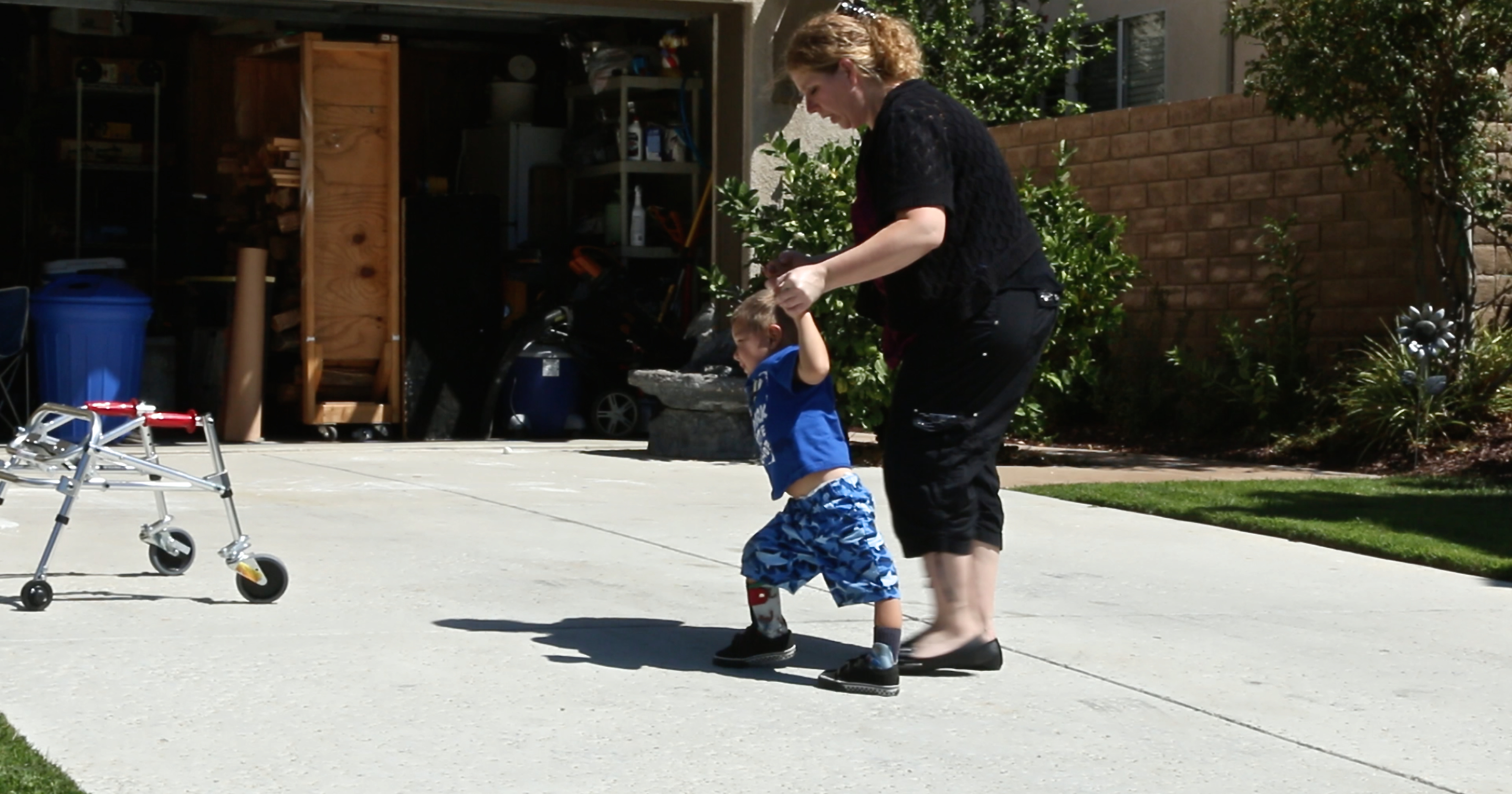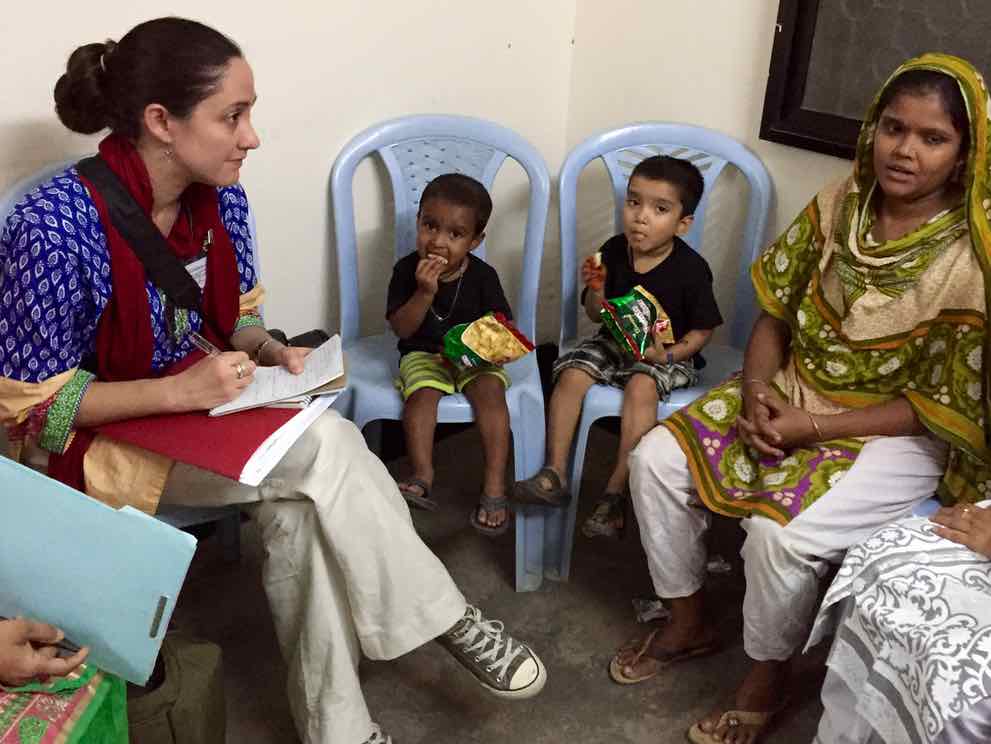
To watch this video, visit National Geographic.
It never occurred to Erin Olivera, a Southern California nurse and mother of four, that one day her youngest son would suddenly come down with a condition that would be irreversible. Lucian was just 11 months old when Olivera noticed something wasn't right. Her son had suddenly started dragging his legs when he crawled. He had no feeling, no control over them. The hospital told her to ride out a supposed hip infection on her toddler, but the paralysis wouldn't go away. It would be more than a year before Lucian would be diagnosed with a polio-like syndrome for the now permanent paralysis in both of his legs. The news was devastating. But it also allowed the Olivera family to focus on improving the life ahead of him.
On a particularly hot September afternoon, Erin and her two youngest boys were playing outside in the front yard. Lucian was wheeling slowly towards his mom with his miniature walker, when one of the wheels rolled off the cement walkway. He whined softly for his mom to come help him. "Come on, you got it," she called, maintaining a confident distance. Biting his lower lip, he heaved his walker back onto the path and kept wheeling towards his mom and big brother. "There you go buddy," she said.
To many Americans today, the polio virus may seem like a disease from another generation, something that we only remember because of a wheelchair-bound President Franklin D. Roosevelt, who was disabled by poliovirus as an adult. But despite having eradicated the virus from most of the world, low vaccination rates continue to beckon polio's return.
Polio remains endemic in three countries: Afghanistan, Pakistan and Nigeria—where families are left to cope with the sudden paralysis of their once-mobile children.
International health organizations are channeling massive efforts and resources towards distributing the polio vaccine in these last few virus strongholds. They're also making sure many non-endemic areas continue to have high vaccination coverage, because in our increasingly globalized world, the existence of a virus anywhere threatens unvaccinated people everywhere.
As part of a series for National Geographic exploring the intricacies of the global polio eradication effort, freelance video journalist Jake Nicol wanted to bring the issue home to an American audience. Last year, dozens of American children were left paralyzed by a mysterious, non-polio virus. Some cases were eventually linked to Enterovirus 68. In other cases, like that of three-year-old Lucian living in Southern California with polio-like syndrome, medical experts were unable to link the condition to a virus. Whatever the cause, all of these children were deemed to have "polio-like syndrome."
To give the audience an idea of what it's like for a family to cope with the sudden paralysis of a child, Nicol and I filmed a day in the life with one of these children. In this video, Lucian's mother Erin shares the story of discovering her healthy son was suddenly paralyzed and talks about the struggle to help him adapt to living with a disability.
Thanks to the widespread use of vaccines, the total global instances of polio have decreased dramatically: from an estimated 350,000 cases in 1988 to 359 cases in 2014.
Lucian's story reminds us that, this struggle is about preventing kids from living with a devastating disability. And while Lucian's paralysis may not have been preventable, those 359 polio cases are mostly children with a paralysis that could have been prevented by a vaccine.
It's a fight that continues in spite of all challenges, because it's winnable, says Bruce Aylward, Assistant Director General for the World Health Organization. And, on the 60th anniversary the Salk vaccine, we're almost there. But, Aylward cautioned the audience of a 2011 TED talk: "Almost just isn't good enough with a virus like polio."
This video offers a window into the world of a family dealing with the shock of a sudden disability and one child's resilience in the face of polio-like syndrome.
Sally Schilling is a freelance video journalist based in Berkeley, CA. She assisted Jake Nicol with the production of this video for a National Geographic series on the global push to eradicate polio, led by the Investigative Reporting Program at U.C. Berkeley.

Education Resource
Meet the Journalist: Carina Storrs
Why does the rotavirus vaccine only prevent 43 percent of young children in Bangladesh from getting...








